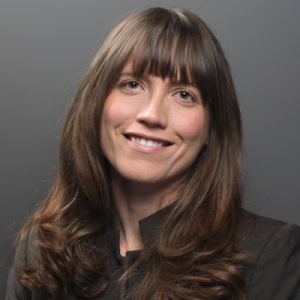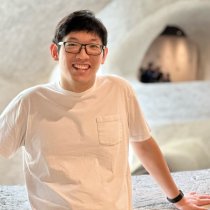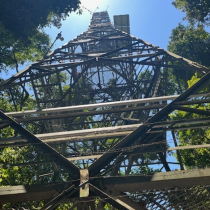Research study of forest restoration will use NEON’s Project BudBurst
May 24, 2016
This year, assistant professor Kimberly Novick in the Indiana University Bloomington School of Public and Environmental Affairs received a $750,000 grant from the National Science Foundation to implement a network-enabled research project that will incorporate and leverage Project BudBurst. The study will focus on understanding the role that land use dynamics have played in ecosystem energy balance over the last century in the southeastern and south-central U.S. Specifically, she will look at whether forest restoration over the last century may be playing a role in counteracting warming driven by climate change.
“The proposed work represents an interconnected network-enabled ecosystem science (NEES) research and education project,” says Novick, because it relies on data acquired from, or shared to, environmental observation networks including NEON, Ameriflux, the Long-Term Ecological Research network (LTER) and the United States Historical Climatology network (HCN) which aggregate long-term ecological data across a range of ecosystems. By leveraging existing open access networks, the researcher is able to use large quantities of spatial and temporal data that would otherwise be cost prohibitive to collect. Novick is also planning on gathering additional plant phenology data via Project BudBurst to inform her research. Project BudBurst is a national citizen science program in which participants make observations of the timing of phenological changes in plants through the seasons (e.g. budburst, leaf out, etc.).
Using Citizen science to fill data gaps
Novick discovered Project BudBurst through a flyer at a semi-annual meeting of scientists working on the Coweeta LTER project and immediately saw the relevance to her lab’s research. “We have reasonably good records of the timing and leaf out at the ecosystem scales, but virtually no information about the timing of leaf out and senescence of particular species...understanding species-specific phenology dynamics is critical for predicting future forest functioning. I’m very optimistic that Project BudBurst can help us fill that important data need.” She was also impressed with the outreach and training resources on the Project BudBurst website and plans to use these resources to enlist local communities in collecting plant observations.
Active learning to engage young scientists
In addition to wanting Project BudBurst data, Novick also sees citizen science as an opportunity for STEM (science, technology, education and math) engagement. “It seems that every week another report comes out suggesting that American students lag behind their international peers when it comes to STEM engagement and competency... a lot of these studies point to the promise of technology in the classroom and extracurricular learning experiences as a way to overcome these deficits,” she said.
After piloting Project BudBurst on a few University-sponsored field trips, she could clearly see the benefits of having students participate actively in extracurricular activities, which were previously organized around students hearing about scientists’ work. “It’s a lot more fun for everyone when the students can actually help us do our work. The nature of observations also allows students the opportunity to take their own path through the forest to explore the ecosystem at their own pace, which I can tell they enjoy.”
Introducing network science through Project BudBurst
Novick also noted that Project BudBurst is a national network of observations (i.e. NEES). By using this citizen science program with scientists early in their academic careers, she is able to provide a simple, engaging and relevant introduction to participating in observation networks and network-enabled research. Two concepts that she believes will improve understanding and forecasting of interactions between human activity and ecosystems at ecologically- and policy-relevant spatial scales.
Upon learning about Novick’s grant, Wendy Gram, Director of NEON Education and Community Engagement said, “Citizen science is uniquely positioned at the interface of science and education. As such, both scientific understanding and educational outcomes move forward. At NEON, we are delighted to know that Dr. Novick’s work will include engaging individuals in Project BudBurst. We’re very excited to see researchers exploring how to incorporate both network science like NEON and NEON citizen science into their work.”
Read more about Novick’s work here.
Interested in participating in Project BudBurst or using Project BudBurst data? Get started now.


